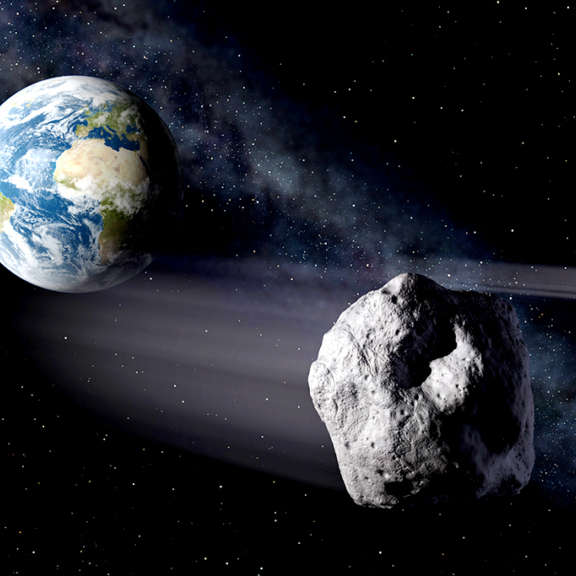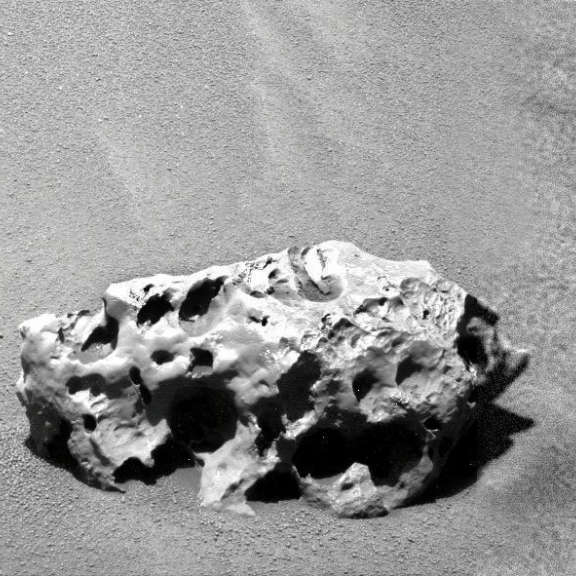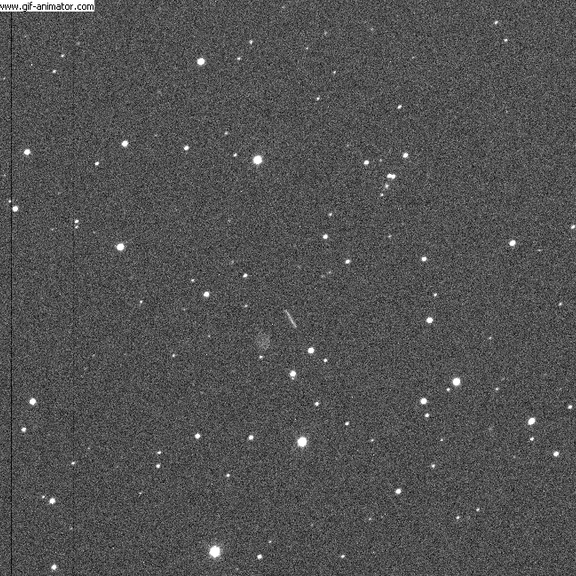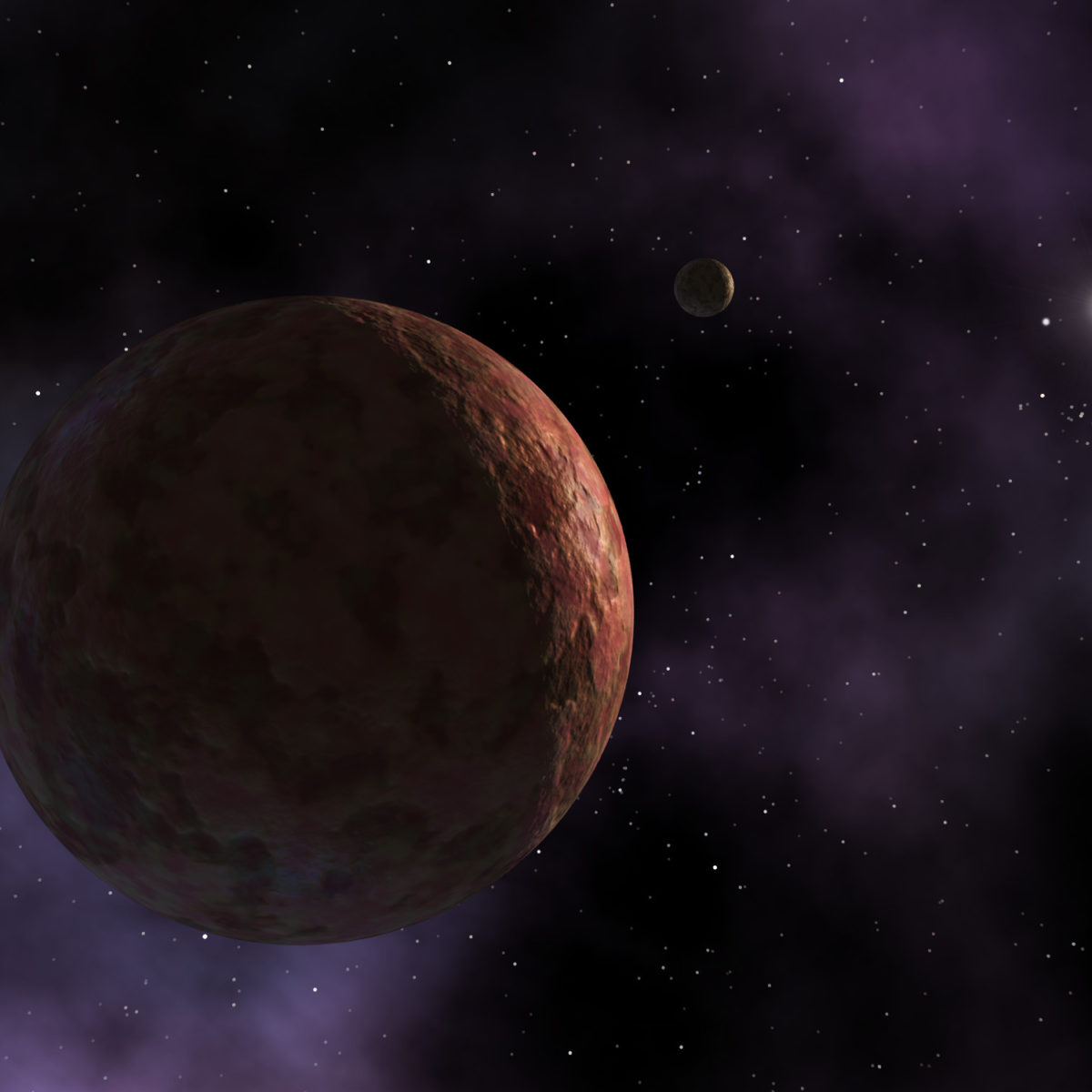All
All
Stories, updates, insights, and original analysis from The Planetary Society.
Near Earth Objects and Planetary Defense
Could a space rock hit Earth and cause widespread devastation? What could we do if we found an asteroid or comet on a collision course with Earth?
Planetary Radio Q and A: Are meteorites on Mars actually interesting?
The Mars Exploration Rover Opportunity has been studying a lot of meteorites. That made me wonder, why study meteorites on Mars when we can study them in hand on Earth? How are Mars meteorites interesting?
Apophis is less scary than it used to be
Based on analyses of previously unstudied telescopic data, NASA scientists have released new predictions for the path of the 300-meter-diameter asteroid Apophis.
It would appear that Opportunity has stumbled upon another meteorite
I wonder if this came from the same original body as Block Island, or if Meridiani is the kind of slowly deflating landscape that accumulates meteorites at its surface, like the ANSMET meteorite hunting spots in Antarctica?
New image of Opportunity on Mars
I really can't explain why it didn't occur to me to search for the rover in the image of Victoria crater released by the HiRISE team on Wednesday.
Updates on the 2007 Shoemaker NEO Grant Recipients (27 April 2009)
Our 2007 Shoemaker NEO Grant winners have been extremely busy over the past two years. Take for example Quanzhi Ye of Guangzhou, China: He was only 18 when he received the award but already the principal investigator of the sky survey at the Lulin Observatory in Taiwan.
Hooray for Hayabusa!
According to JAXA (the Japanese space agency), poor little Hayabusa has successfully restarted its ion engine and has resumed powered flight today. Hooray! This is good news for Hayabusa's eventual return to Earth.
Updates on the 2007 Shoemaker NEO Grant Recipients (27 June 2008)
Amateur astronomers play a critical role in retiring the risk of impact from near-Earth objects. When the Shoemaker NEO Grant program began in 1997, the focus was on finding previously undiscovered objects one kilometer in diameter and larger. Thanks to professional NEO survey programs like LINEAR (the Lincoln Near-Earth Asteroid Research program run by MIT’s Lincoln Laboratories) and the Catalina Sky Survey (run from the University of Arizona’s Lunar and Planetary Laboratory), the goal of discovering the vast majority of large NEOs is within reach, and the focus of the Shoemaker NEO Grant Program has shifted to astrometric follow-up and physical studies.
Hayabusa update
JAXA has posted a note on their website on the status of Hayabusa, which apparently reached aphelion in late May. Hayabusa is Japan's amazing ion-powered mission to asteroid Itokawa, which touched down on Itokawa to grab a sample in mid-November 2005, but suffered an injury that has left in doubt its ability to return the sample capsule to Earth.
LPSC: Thursday: Rovers, Titan, Mars, Venus Express, Neptune
I spent a large portion of the day at the Lunar and Planetary Institute's library and presented my own poster during the poster sessions, so my coverage of Thursday's sessions is limited.
"Return of the Falcon," a new animation of the Hayabusa mission
JAXA has released a 30-minute video of the Hayabusa mission,
Updates from Past Recipients of the Shoemaker NEO Grants (1 March 2007)
Thanks to The Planetary Society Shoemaker Grant, the 1.06-meter KLENOT telescope optics was completed at the Klet Observatory. Regular observations of the KLENOT project started in March 2002 under the new IAU/MPC code 246, so we can now present results covering 5 years of this work.
New Horizons is targeting Jupiter!
New Horizons' Jupiter encounter is officially underway!
Updates from Past Recipients of the Shoemaker NEO Grants (18 July 2006)
Using the Shoemaker NEO Grant funds, Minor Planet Research has purchased a 1.7-terabyte data server for our Asteroid Discovery Station (ADS) education outreach program Through the generosity of Dr. Philip Christensen, this server is housed at the Mars Space Flight Facility (MSFF) at Arizona State University in Tempe, Arizona.
New Horizons tracks an asteroid
New Horizons is spending the summer traversing the asteroid belt. I haven't written a lot about New Horizons lately because the mission has been going so uneventfully well. But now I've got something to write about: data!!
OPAG, Day 2: Ground-based study of the small bodies in the outer solar system
After the political discussions of the morning, Mike Brown stood up to give the
LPSC: Friday: Hayabusa
The audience was rapt as Project Manager Jun'ichiro Kawaguchi stood up to give an introduction to the Hayabusa spacecraft and described the saga of the mission to date.
Big News for Hayabusa: It wasn't hovering, it landed!!
Remember how Hayabusa was virtually still for 30 minutes? JAXA is now saying that Hayabusa actually touched down -- and more than that, they may even have a sample.
Closer still to Itokawa
Hayabusa reached an altitude of about 560 meters above Hayabusa at 17:30 UTC. And at 18:00 UTC they are at 500 meters. This is still farther above the asteroid than the asteroid is big...there is still a long way to go before Hayabusa touches down...


 Explore Worlds
Explore Worlds Find Life
Find Life Defend Earth
Defend Earth


 Sun
Sun Mercury
Mercury Venus
Venus Earth
Earth Mars
Mars Jupiter
Jupiter Saturn
Saturn Uranus
Uranus Neptune
Neptune Small Bodies
Small Bodies











